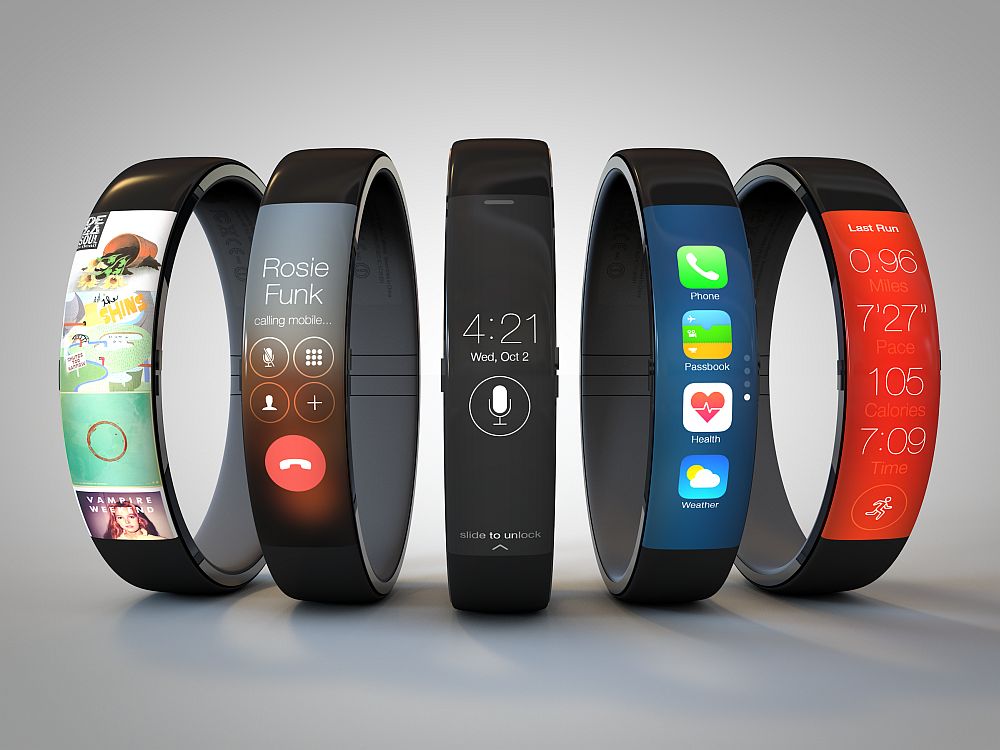iWatch incoming

Now there’s a surprise! Well, not really. We all know 9/9/14 is going to be a big reveal. Hopefully, anyway. We don’t want to be let down.
We have smartphones, so why not smartwatches? Everyone appears to want to get into the smartwatch market. There is Android Wear, Samsung Galaxy Wear, the Google/LG smartwatch, Razer Nabu and entries form Microsoft and Sony.
The header image of this post is the proposed iWatch (which isn’t an official name, by the way) that was presented over on Tom’s Guide, and I have to say it looks like a pretty nifty device. It is also believed that it will have not just the ability to display apps, but will have various health-monitoring functions and present alerts as well.
I wondered how it would actually clip to the wrist in a secure fashion, and how it’s health monitoring function would actually work if the fit wasn’t tight. But I like the way it looks and the additional functionality make it appealing.
Sadly, I also learned it may not look anything like that, and will instead come across as much more pedestrian as you can see over on CNN Money. Their byline even says ‘See Blueprints for Apple’s Smartwatch” and it looks like a regular, square faced watch.
I didn’t think people wore watches too much these days anyway, but I have no numbers to back that up. I haven’t worn one for years, and there has been evidence that smart devices/phones are used for that purpose more and more, even all the way back in 2005 (and don’t miss the picture on that page!).
But now they are, apparently, coming back. I’m ok with it, and after having become troubled about the standard watch-y design the new iWatch will supposedly have, this article over at Gizmodo says the design is still way up in the air and even hint at a design more akin to the one at the top of this post. Here’s another example from artist Todd Hamilton, as presented on the linked page. It’s pretty nifty.
I feel that if you’re going to make a smartwatch, you shouldn’t force yourself into standard watch design. Make it something unique, especially since we ultimately just don’t know how how well they work in the first place.


